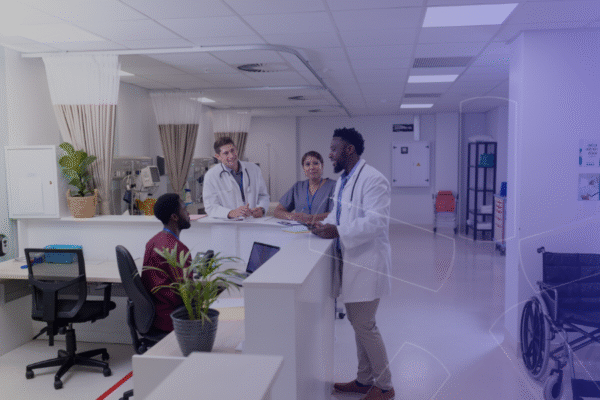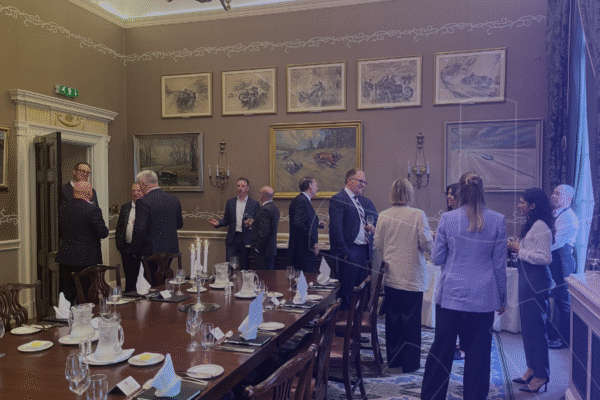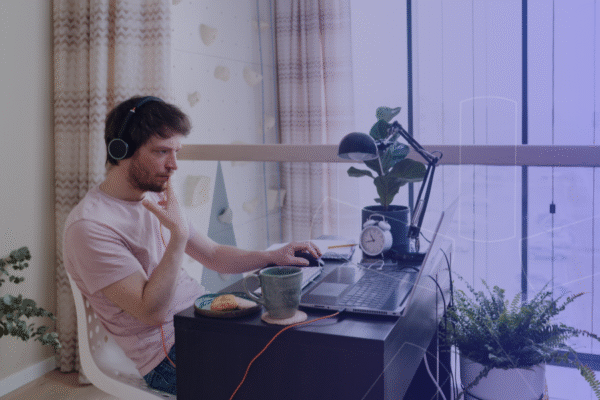5 Ways to Improve Workplace Wellbeing

Workplace wellbeing might conjure up visions of in-office yoga studios with soothing music and scent diffusers.
Which can be part of it. But in reality, workplace wellbeing means a lot more, and means multiple things to different people.
We’re in a time when everyone’s wellbeing can do with some improving. The workplace and the nearly 90,000 hours we’ll spend there over the course of our lifetimes has a huge impact on how we feel in every aspect of our lives.
44% of employees don’t feel their mental health is supported by their employer, 40% of Gen Z and 35% of millennials feel stressed all or most of the time, and poor mental health costs at least $1 trillion globally per year.
The time to improve workplace wellbeing is now.
It’s been proven that higher workplace wellbeing scores usually mean better firm performance. The better people feel about your organization, the more ownership they’ll take and the longer they’ll stay.
Not that improving workplace wellbeing is some kind of devious, Mr. Burns-esque ploy to rake in more profits – it’s the morally correct thing to do.
In this post we’ll cover a definition of workplace wellbeing and five ways to improve it at your organization.
6 Critical Goals for Workplace Innovators in 2025
Workplace leaders and innovators have an avalanche of priorities this year. In this transcript from our latest webinar with future of work expert Jane Young, you'll find 6 critical goals to prioritize in 2025.

What is workplace wellbeing?
Job posting site Indeed defines workplace wellbeing as “how someone feels about their job or the safety of their work environment.” Multiple factors come together to influence workplace wellbeing, including work environment, physical health, mental health, emotional health, compensation, sense of purpose and trust in leadership.
Improving workplace wellbeing takes a lot more than people being nicer to each other. In fact, a study of 46,000 employees found that individual mental health interventions were not enough to improve wellbeing. Organization-wide interventions are needed.
Five ways to boost workplace wellbeing
1) Make sure you have a culture of psychological safety.
We’re starting with this one because it’s the foundation for everything that follows. And if you don’t already have it, psychological safety is the most difficult of these five things to pull off. Trying to improve workplace wellbeing without this starting point will be largely ineffective and will make anything else you do seem like a gimmick.
So what is it and why is it so critical?
Psychological safety is “feeling able to show and employ one’s self without fear of negative consequences of self-image, status, or career.” In a workplace context, it’s the belief that you won’t face negative consequences if you ask for help, admit you’ve made a mistake or challenge the norm.
The more psychological safety an individual feels, the better their state of emotional wellbeing. A 2022 study on a firm’s accountants found that psychological safety positively impacted both intrinsic and extrinsic motivation and wellbeing.
This is even more important for those in the Gen Z and millennial age brackets. That’s because they’re used to economic and financial insecurity more so than older generation, for whom job security has usually been a given. Showing up to work as their authentic selves improves mental, emotional and even physical health. And it benefits the entire company when people feel like they can challenge the status quo.
Workplaces without psychological safety are also workplaces where progress is stifled. Funny how those two things go together isn’t it?
Psychological safety starts with, and is modelled by, your organization’s leadership team. It starts with a mindset that your people are just as important as getting results, which isn’t a given at every organization.
Three steps recommended by Harvard Business Review are letting go of perfection, advocating for diversity, and communicating with consideration, vulnerability and empathy.
A culture of psychological safety is also a culture of accountability, trust and transparency, which leads quite nicely into our next way to boost workplace wellbeing.
2) Give people autonomy to decide how and where to work.
Successful relationships are built and maintained on trust, says every self help article and therapist out there. But somehow that’s not true for workplace relationships between leadership and employees. The overall state of wellbeing is suffering for it.
Hybrid work has exacerbated the consequences of this lack of trust and autonomy. It all stems from a misplaced fear of unproductivity. A study by Slack revealed that a quarter of employees don’t feel trusted at work. This is probably because 70% of leaders reported measuring productivity based on visible activity only. In response, 32% of employees report doing busy work just for the sake of it.
Almost half of employees link excessive monitoring to increased anxiety. And a similar number of Gen Z and millennial employees surveyed by Deloitte report that a lack of control over how and where they do their work contributes to anxiety and stress.
Feeling like you’re not trusted doesn’t just increase anxiety. It also causes people to spend more time on unfulfilling work. A sense of purpose and mastery can’t exist in this strange new dynamic, making the world of work much more stressful for employees and for managers, who try as they might, can’t seem to achieve their objectives when no one is doing any real work.
The case for giving individuals and teams autonomy to decide how and where to get their best work done is a strong one, despite all the full-time in office mandates we’re seeing in the headlines.
Architecture firm Gensler found that employees in innovative companies spend 36% of their time working in places that aren’t either the office or home, compared to just 20% at the least innovative companies. For employees at innovative companies, almost 75% of their meetings are hybrid meetings versus just over half at the least innovative ones.
Research already shows hybrid work boost wellbeing, with 66% of 2000 employees surveyed by IWG reporting better mental wellbeing. Without all those hours spent sitting in traffic or on public transport, employees also claimed they’d gained an extra 71 hours of sleep per year.
Boost autonomy by rejecting hard line RTO mandates or backtracking if you’ve already gone there. Instead, you can give managers the autonomy to decide on team-level agreements or provide attendance guidelines if you’d really like people to come in for a minimum number of days.
Look Beyond Mandate Wars and Drive Purposeful Togetherness
Check out this on-demand webinar to look beyond the headlines and hype and dive into wider datasets and actionable strategies for boosting purposeful connection and productivity in the workplace.

3) Invest in amenities people actually want and use.
We’ve come so far since the days of putting ping pong tables and beer fridges in job postings.
But not quite far enough.
Workplace leaders looking at office amenities simply as ways to get more people into the office are missing the point entirely. Gimmicky amenities might attract some curious visitors initially, but then lose their appeal after everyone figures out that they don’t make anyone feel or work any better. And if they’re not something people would want to have in their home, that new-fangled amenity is probably a fad.
Amenities should provide two things:
- Novel experiences. These improve neuroplasticity (the brain’s ability to rewire itself) and can even help people break out of cycles of negative thinking and rumination. So as long as it’s not a gimmicky one-time thing, amenities like fitness classes or after-work socials boost wellbeing and can even help employees find new ways to tackle that blocker they can’t seem to move past
- Mental and emotional regulation. Every job has its stressful moments. Most of these should be “positive” stressors that drive us to challenge ourselves and work more efficiently. But there’s bound to be moments that have us reaching for coffee number five of the day and feeling just a little more snappy than usual with our teams. Amenities like meditation rooms, nap pods and green spaces give people a place to process and relax, instead of brushing stress or negative feelings under the rug only to have it rear its ugly head later on as a mental or physical health issue
Here are a few ideas for workplace amenities that boost wellbeing, and the science behind them:
Green spaces: A 2015 study found that employees in environments with biophilic design were 6% more productive, 15% more creative and 15% more satisfied with their work. What counts as a green space? Think nice views of nature, natural lighting and lots of real plants.
Fitness facilities (on-site, subsidized or both): Regular exercise boosts resilience to acute stress, so making easier access to exercise an amenity boosts wellbeing. Just make sure there’s something for everyone. Some people let the stress drift away in a Hatha yoga class, while others blast it away doing pullups with Defying Gravity playing on repeat.
Meditation rooms: Quiet rooms where people can sit in silence – whether they’re actively meditating or just zoning out – have been proven to reduce stress and burnout. In a study published last year, serenity rooms were found to prevent burnout and boost wellbeing in nurses during COVID-19. Even VR relaxation sessions have been proven to effectively reduce workplace stress.
Healthy meals, snacks and drinks. Friday beers and unlimited chocolate almonds might feel nice in the moment, but do they really boost our wellbeing in the long run? Employees who make mostly unhealthy food choices are 66% more likely to be less productive than their healthier eating peers. Healthy options also eliminate that decision fatigue of what to pack for lunch every day.
4) Creates spaces and events that boost social connection.
Experts argue that loneliness is tied to an increased risk of type 2 diabetes, heart disease and stroke. And while loneliness doesn’t just happen at work, feeling more socially connected from 9-5 has wellbeing benefits that reach much further than the time you spend at your desk.
Unfortunately, 55% of employees report being lonelier since starting hybrid work, according to Gallup.
Forcing people to “connect” through being in the same space does more harm than good. Do you know anyone who’s a huge fan of open plan offices? We certainly don’t.
The right kinds of social connection creates a buzz and a boost to wellbeing. And while it’s never going to be possible to make sure every single employee is getting that social connection boost, the most you can do as a workplace leader is facilitate the perfect times and places for it to happen.
One way to do this is through events. And not just the quarterly all-hands that might spring to mind first. Team days in the office, mentorship meetings, after work socials and classes all fall into this category, too. Even for a remote-first company like Atlassian, coming together in-person three to four times per year has tangible wellbeing benefits. Atlassian employees reported a 96% boost in satisfaction and a 27% increase in team connection after an in-person meet up.
Another way to boost connection is through the way spaces are designed. Modular auditorium spaces for large gatherings are becoming a key facet of workplace design these days. The same is true for informal collaboration spaces. German media company RTL’s recent office redesign features two large informal meeting spaces and even circular coffee counters throughout the building to make those caffeine hits a bit more sociable.
The State of Social Connection in the Hybrid Workplace & How to Rebuild It
For all the benefits of hybrid work, building in-person social connection can be a challenge - without the right approach. Download this infographic for the latest research on connection in the workplace and three steps to rebuild it.
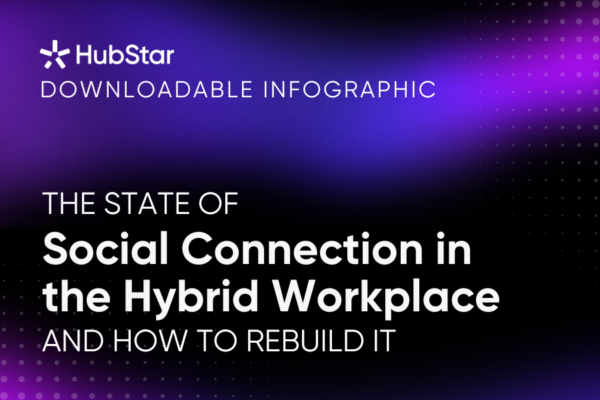
5) Use data to put diverse spaces at the core of workplace design.
Employees all have one thing in common. Which is not wanting to sit in the same place all day, staring at the same screen under the same fluorescent hospital lighting.
But the commonalities end there. Some get so stuck into their work that they can sit in the same ergonomic chair for hours on end. Others need to move to a new environment every couple of hours or go for a walk to mull over ideas.
Despite this being common knowledge, only a third of workplaces have been redesigned over the past three years according to Gensler’s 2024 Global Workplace Survey. That means employees at two thirds of workplaces are trying to shape their work habits around the work environment. Which is a lot like trying to shove a square peg into a round hole. That’s frustrating and not to mention depressing if you’re the peg.
Workplace design has a huge impact on not just productivity but mental and emotional health.
This 2024 study found that employees experienced higher emotional exhaustion working in hot desking layouts and open plan offices. Interestingly, men and women in this study reported different levels of emotional and exhaustion and psychological demand in these environments.
To design an office with enough layouts and space types for everyone, use occupancy data. People vote with their feet, so quantifying their choices of work environment will help you design more of the right spaces and track the performance of those spaces over time. Feedback from surveys and focus groups is a must-do as well, especially if it’s your first redesign in years.
Another upside of measuring occupancy data is that it shows you what your specific workplace needs rather than what everyone else is doing.
Not having enough meeting rooms is a complaint as old as time, for example, but Gensler’s survey shows that globally, employees spend the same amount of time working individually as they do collaboratively. And while a big chunk of this individual work tends to be done at home, we can’t expect people to only come into the office to work as a team. Data and feedback shows you what the split of individual versus collaborative work looks like at your organization, plus the categories each falls into.
Not all meetings are the same. Some need a soundproof room, some need AV equipment and some can be done from a nice comfy sofa. Outdoor clothing brand LL Bean’s HQ features two treehouses for relaxing and informal meetings, for example.
Not all individual work is the same either. Some needs total silence, some benefits from occasional interactions with colleagues, and some needs to be done right next to a phone booth for that call in ten minutes.
A workplace that makes people feel good about their work and about themselves must be designed to accommodate all of these working styles.
Dynamic Workplace Strategy: 6 Goals and 4 Capabilities for Success in 2025
Dynamic workplace strategy aligns ever-changing work patterns with the work environment with a result that improves wellbeing and reduces costs and carbon emissions. Download this guide for an actionable framework to create your own strategy this year.
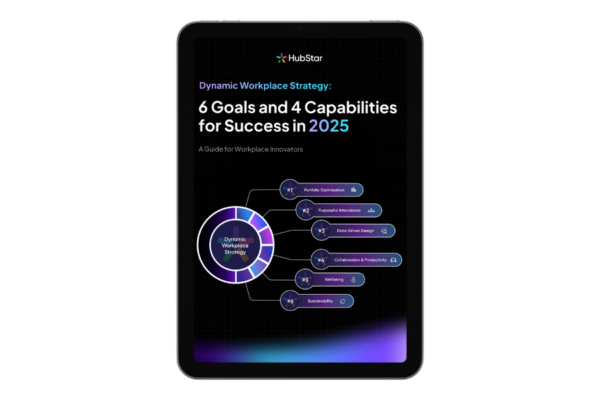
Share this post
